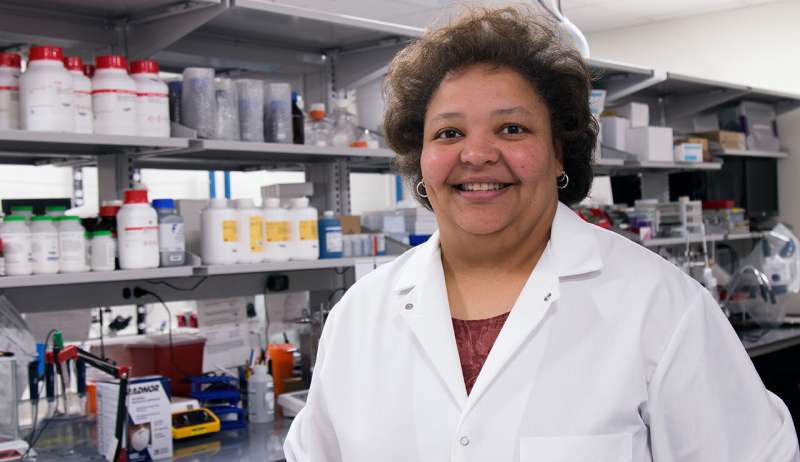Rhonda Prisby, associate professor of kinesiology in the College of Nursing and Health Innovation. Credit: The University of Texas at Arlington
A researcher at The University of Texas at Arlington has found that blood vessels within bone marrow may progressively convert into bone with advancing age.
Examination of these vessels by Rhonda Prisby, associate professor of kinesiology in the College of Nursing and Health Innovation, led to the discovery of bone-like particles in the peripheral circulation. Her findings have recently been published in the journal Microcirculation and suggest that ossified particles may contribute to diseases such as vascular calcification, heart attack, stroke and inadequate blood supply to the limbs.
"By examining seemingly unrelated images and linking the details of them together, I was able to posit the presence of bone-like particles in the blood," Prisby said "In fact, some of the ossified particles are large enough to clog the smallest blood vessels in the vascular tree."
Approximately 610,000 people die each year from a heart disease-related event, making it the leading cause of death for both men and women in the United States, according to the Centers for Disease Control and Prevention.
Vascular calcification is a common characteristic and risk factor for morbidity and mortality, Prisby said. These bone-like particles are potentially more dangerous because of their sharp edges.
"Some of the ossified particles have sharp tips and edges that could damage the lining of blood vessels," she said. "This damage could initiate events leading to atherosclerosis (build-up of plaque), which can restrict blood flow over time."
The discovery of these bone-like particles could help physicians detect and treat potentially life-threatening conditions.
"When looking for etiologies related to vascular calcification, heart attack and/or stroke, perhaps we should consider if and how ossified particles contribute to these diseases," Prisby said. "My lab will examine these possibilities."
More information: Rhonda Prisby et al, Discovery of a bone‐like blood particle in the peripheral circulation of humans and rodents, Microcirculation (2019). DOI: 10.1111/micc.12579
Provided by University of Texas at Arlington





















